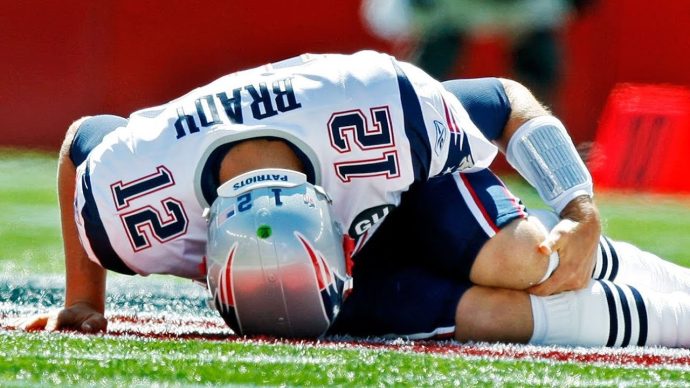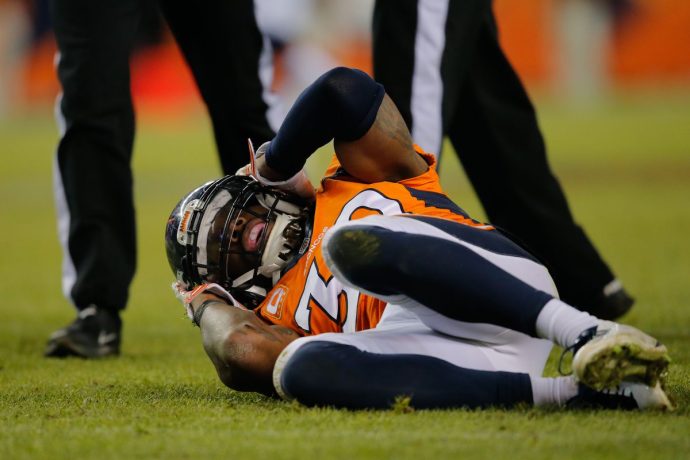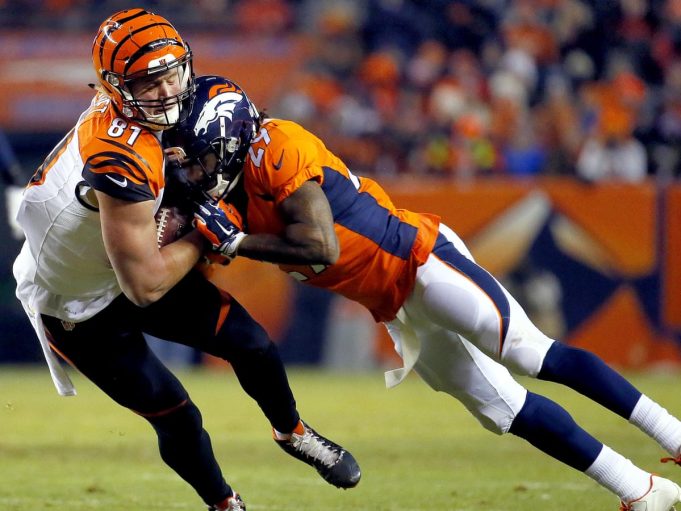In the United States, American football has become one of the most popular sports in recent years. With the possible exception of basketball, no other sport is as physically demanding or dangerous for players as football. It is not uncommon for some of these injuries to lead to permanent damage with a lifetime health impact that can be devastating.
American football is a sport that requires high physical fitness for those that play, which can be a good thing. Many players succumb to injury because they do not play smart and try to run into tackles rather than evade them.
American Football vs. Basketball vs. Soccer
American football has more injuries than the other two sports mentioned. Although soccer is not as contact heavy as American football, it can still get pretty physical on the field. In basketball, there are a lot of collisions and concussions in games with players elbowing, and challenging-nosed plays happen quite often. The only place basketball wins in this aspect is that players do not get hit by opponents nearly as much as those playing American football. Basketball has more ankle injuries due to more stops and starts from the gameplay than American football or soccer, where there are more extended movements in runs.
What Are the Lasting Health Ramifications of Each Sport?

1. Broken Bones
Broken bones are the most common injury that can occur in football. It is because many contacts are created between players, leading to many concussions and broken bones. The severity of the injury depends on how bad it is, as people suffer from broken bones all over their bodies. Some people could have multiple broken bones from just one game due to injuries sustained in collisions with quarterbacks or other players. In the long-term, some problems still go along with broken bones, such as chronic pain and infections due to blood clots forming around the bone fragment, causing more problems down the road.
2. Concussions
Concussions happen in all sports, but they are more prevalent in football. Most concussions are mild and can be ignored for a long time. However, some of them can have serious aftereffects, such as memory loss or brain damage. It is also widespread for someone to have multiple concussions throughout their life due to the high injury rate in contact-heavy sports. In the long-term, concussions can lead to significant brain trauma and a chronic issue that will affect the rest of your life.
3. Sprains/Strains
The most common injury in basketball is a sprain or strain due to the movements you make while playing this sport. It is widespread for basketball players to suffer from sprains during their careers. These injuries can be long-term and usually do not heal on their own, which is why you will see many players get surgery on their ankle or knee. The worst part is when a sprain goes untreated, and the ligament becomes chronically damaged, which means that it will never heal properly, and it can result in arthritis later on in life.
4. Tears and Dislocations
The most common injury in soccer is a muscle tear or strain. It is widespread for calf tears or hamstring strains to occur in soccer because the amount of sprinting you do during a game can lead to muscle tears. The fact that you are constantly running also increases the risk of tearing ankle ligaments or suffering from a dislocation
Why Do Some Sports Have More Health Risks?

Football and hockey are the most popular sports in America, and most players get injured in these two sports. Over sixteen million people play football at an amateur level, which means it is more likely that a player will get injured while playing. Football has more concussions than any other sport, leading to significant health problems down the road.
Basketball also has its fair share of injuries: however, they are not as common as in football and hockey. One of the biggest reasons basketball players do not get injured as much is because they do not run as much, which means less stress on their knees and ankles, resulting in fewer ligament tears.
Injuries in soccer happen in every game of soccer played around the world, which means that there is a high chance of being injured during your career. The nature of soccer means you will run into people the whole time, leading to significant injuries and long-term problems. Some injuries are more common than others, but most can become chronic if not treated properly, so athletes must have proper health insurance.
In soccer, you also have an equal chance of getting injured on a rainy or snowy day due to constantly moving around on these surfaces to avoid slipping or falling. It puts more stress on your body resulting in chronic problems even after the injury has healed completely.
Is There a Cure for Injuries?
You can treat some injuries through the use of painkillers or anti-inflammatories. However, there are some injuries that it is not possible to treat at all. It is essential to take care of your body not only because you could get injured but also because you want to feel as good as you can for as long as possible. Always watch how often your body is hurt, and do not push it too hard in any activity. If you start feeling any pain or sensation after an injury, stop immediately and let your body rest before returning to the game or activity.
1. Physical Therapy
Physical therapy is usually used to rehabilitate injured joints/joints, tendons/ligaments, and muscles that have been damaged during play. Going through physical therapy after having any major surgery is essential to get back into sports promptly. Physical therapy is also used to improve strength and flexibility in your joints, which will prevent them from overextending or tearing the ligaments during play. Like any treatment, one session isn’t usually enough to restore someone to total health. Physical therapy patients will usually attend sessions a few times a week for a few weeks or months, depending on the damage.
2. Surgery
Unfortunately, surgery is one of the most common treatments for an injury due to sports. Most surgeries are performed so that doctors can reattach tendons/ligaments and bones that had separated when you got hurt. Some surgeries can be redone, while others are permanent and require the person to have a bone graft. Some of the most common types of surgeries that athletes get are ankle/foot surgery, elbow surgery, shoulder surgeries, and spine surgeries. According to Integrated Orthopedics, over 30% of the total injuries sustained involve a football player’s knee, and of those at least 8% require medical intervention.
Sports Medicine Cost

The cost of sports medicine varies from sport to sport, depending on how you get treatment from a professional. Some of the more expensive types of sports medicine are spinal shockwave therapy, physiotherapy, and physical therapy. Some less expensive treatments include chiropractic services, acupuncture, and manual therapy. Physical therapy’s first session is more expensive than a typical session. Still, the physical therapy costs $150 per session on average without insurance: it will take about three sessions a week to get treatment at your local doctor’s office.
Injuries are a significant problem in sports. Many people who play these sports for recreation and fun get injured yearly no matter how good they are at their sport. It is possible to avoid getting injured, but the athlete must follow their doctor’s advice and use the proper equipment when participating in any sport. If you follow all of these tips, you should be able to prevent an injury from affecting your gameplay and even continue playing without having to go through any painful physical therapy sessions.















